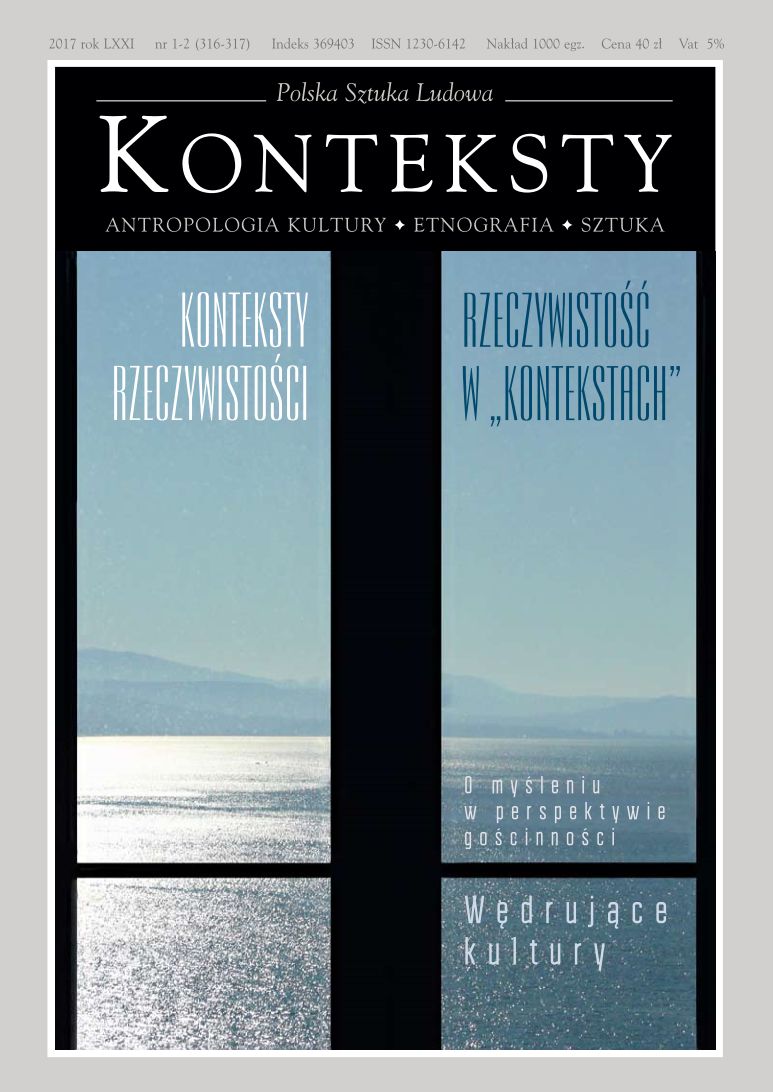Liminalność na przykładzie twórczości Stanisława Wyspiańskiego i Tadeusza Kantora. Obraz idei komplementarnych
Liminality upon the Example of Works by Stanislaw Wyspiański and Tadeusz Kantor. An Image of Complementary Ideas
Author(s): Dominika ŁarionowSubject(s): History, Language and Literature Studies, Fine Arts / Performing Arts
Published by: Instytut Sztuki Polskiej Akademii Nauk
Keywords: Tadeusz Kantor;Stanisław Wyspiański;theatre;anthropology;
Summary/Abstract: The article presents two artists: Stanisław Wyspiański and Tadeusz Kantor, who in their works applied the idea of liminality so as to describe their psychic states and attitudes towards art. The titular liminality is conceived in accordance with the theses propounded by Arnold van Gennep. At the same time, the discussed authors were not interested in rite de passage as a ritual derived from folk qualities but were fascinated solely by the moment of suspension, i.e. a liminal situation, without proposing its unambiguous solution. The author commenced her analysis by considering the Strawman dramatis persona from Wyspiański’s play Wesele, which the playwright employed to introduce into Polish art an interest in liminality as a state of suspension. An inevitably cursory analysis demonstrated the extent to which the introduced straw character differed from the aesthetic norms and canons of the period and became a highly unique creation that throughout the whole twentieth century intrigued and inspired various authors. Tadeusz Kantor, who was enthralled by Wyspiański, borrowed the latter’s predilection for liminality, which he put to a different use. The dissimilar character of the approach to rite de passage was, in the case of both artists, the outcome of different experiences, not merely aesthetic but also personal. The individual life story of both men generated the necessity of a different comprehension of death, dying, and illness and thus self-perception vis à vis the world. Liminality, which the Young Poland-era poet found so fascinating, turned into an extremely capacious category, making it possible to perform certain transgressions in art. The author attempted to demonstrate the way in which Kantor made use of liminality by treating it slightly perversely or irreverently – on the one hand, by resigning from the Strawman’s straw and, on the other hand, by standing on the threshold of illusion and disillusion.
Journal: Konteksty
- Issue Year: 316/2017
- Issue No: 1-2
- Page Range: 277-288
- Page Count: 12
- Language: Polish
- Content File-PDF

